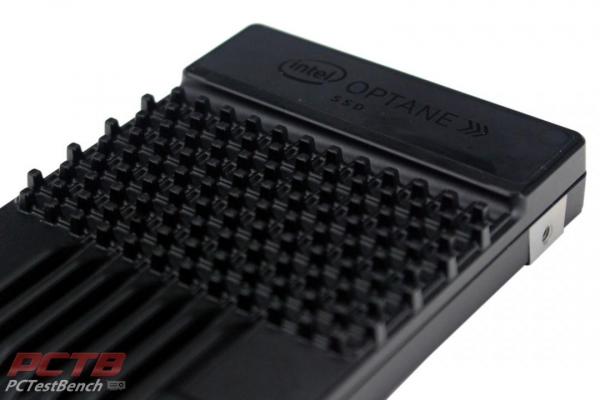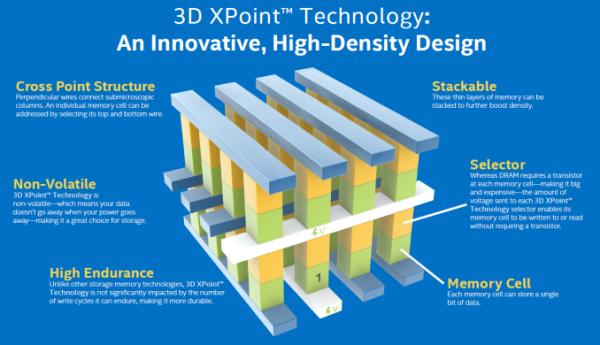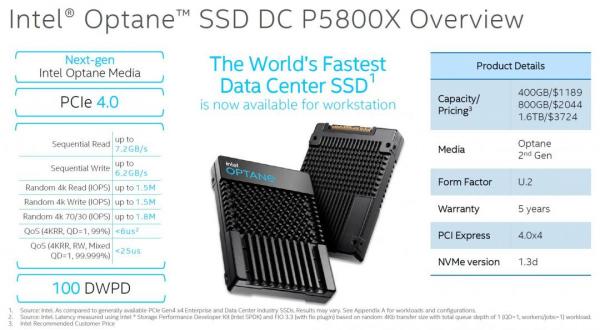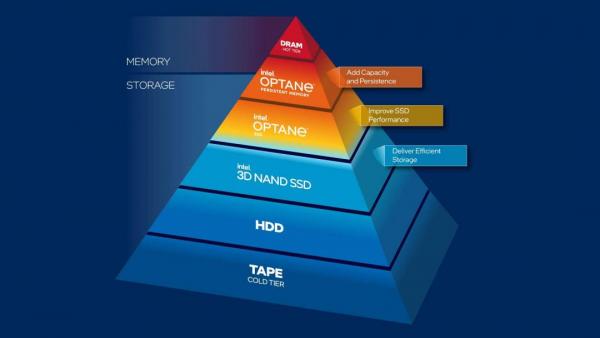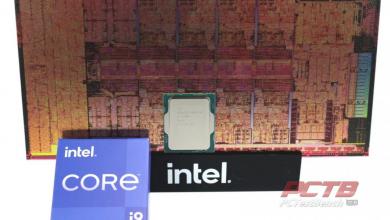Intel’s Optane memory products, developed in conjunction with Micron, are an interesting product to explain. Early models were low-capacity devices meant to act as a cache or buffer against a larger, slower device but drives with enough raw capacity to be useful on their own quickly followed. While consumers had a hard time looking past a higher cost per capacity unrealistic marketing numbers pushed with traditional NAND drives, the Enterprise world certainly didn’t. What’s so special about Intel’s latest Optane SSD DC P5800X? Well, on paper, it’s about the highest performance drive ever made. Leveraging PCIe 4.0 the P5800X can achieve sequential read speeds of 7.2GB/s and sequential write speeds of up to 6.2GB/s and up to 1.5 Million read and write IOPS.
There are some significant differences in how Optane’s underlying 3D XPoint architecture operates vs traditional NAND flash that you will find in the overwhelming majority of SSD’s out there. Optane uses a relatively simple system comprised of layers of perpendicular interconnects, with a binary value stored at each intersection or ‘cross point’ that is the namesake. Traditional NAND flash uses groups of components with each element in the page soring a variable voltage. The earliest NAND flash only stored 2 values, a zero or a one, but modern TLC or QLC can store eight or even sixteen different values respectively. Optane also has the advantage of not needing to erase a cell before it can be written to again, something that again saves time and effort over NAND’s read, erase, program cycles.
Optane’s prowess comes to play here with extremely fast access to small amounts of data. Think of Optane operating like a spreadsheet, with data stored in or read from a cell simply by giving it a row and column address. NAND flash on the other hand would be paragraphs in a document. You need to know what page or what paragraph, read the entire thing into memory, and then go find the word you want somewhere inside. If you want to change a single word, you need to read the entire paragraph into memory, update the single word, and re-write the entire paragraph back to the page. Not only does this take a lot longer, but you also burn a lot of somewhat limited write cycles. Optane also has a distinct advantage here on longevity with more write cycles. Our Optane SSD DC P5800X is rated for 100 DWPD (Drive Writes Per Day). On this model, that is 80TB of writes per day, 365 days a year, for 5 years. We are talking literally HUNDREDS of Petabytes written. If you are not familiar with Petabytes (PB), that is 1000 TB or 1,000,000 GB.
You can probably tell from our terrible analogy why Optane would be drastically quicker to read or write small values. This comes out as much lower latency, and small single queue depth reads and writes being orders of magnitude faster. Like anything else in the computer world, this can be parallelized… to a point. Let’s check out this monster and see how it does!
PC Test Bench would like to thank Intel for sending us the Optane SSD DC P5800X drive over to check out!
Intel’s take on the Optane SSD DC P5800X:
Introducing the World’s Fastest Data Center SSD
Even fast NAND SSDs are no longer adequate for data-driven applications that need to access and process data in real-time or as a buffer to fast Ethernet (NIC) connections. With an industry-leading combination of low latency, high quality of service (QoS), fast throughput, and high endurance Intel® Optane™ SSD P5800X accelerates access to large and complex data sets needed by enterprises and cloud service providers to run their high-demand workloads. Critically, unlike other SSD technology, Intel® Optane™ SSDs can read and write simultaneously without performance degradation.
Unrivaled Random Read Low Latency
The low-latency Intel® Optane™ SSD P5800X Series delivers near-nanosecond response times under any workload, maintaining consistent read response times, regardless of the write throughput. Average read response times remain below 6μs, while maintaining a 70/30 mixed read/write bandwidth of greater than 8GB/sec.
Features
- Unrivaled Random Read Low Latency
The low-latency Intel® Optane™ SSD P5800X Series delivers near-nanosecond response times under any workload, maintaining consistent read response times, regardless of the write throughput. Average read response times remain below 6μs, while maintaining a 70/30 mixed read/write bandwidth of greater than 8GB/sec. - Consistent, Predictable Quality of Service (QoS)
In an environment of fast-growing data and demanding customer requirements, data centers need predictable application performance. - Blazing Fast Performance
The PCIe 4.0-compliant Intel® Optane™ SSD P5800X can reach up to 1.6M IOPS of random read or random write performance at low queue depths. The PCIe bus is designed as a bidirectional bus (reads and writes) so the Intel® Optane™ SSD P5800X is capable of achieving greater-than-spec sheet performance (up to 2.0M IOPS) under 70/30 mixed loads. The P5800X Series also has a unique 512B (sub-4K block) read capability designed specifically for metadata use cases and is capable of reaching up to 5M IOPS even in mixed workload scenarios. - High Endurance for Lower Storage Costs and Less Downtime
Greater endurance means longer life for your storage media. By using Intel® Optane™ SSDs as a caching or tiering layer for your write-heavy workloads, you can extend the life of your lower cost NAND storage media with less maintenance and downtime.
Quick Specs
- Capacity
- 400GB, 800GB, 1.6TB
- Endurance Rating
- 100 DWPD
- Sequential Bandwidth – 100% read
- 7200MB/s
- Sequential Bandwidth – 100% write
- 6100MB/s
- Random Read (100% Span)
- 5 Million IOPS
- Random Write (100% Span)
- 35M IOPS
- Latency (Read & Write)
- 5 µs
- Maximum Operating temp
- 70C
- Form Factor
- 5” 15mm
- Interface
- PCIe 4.0 x4
- MTBF
- 2 Million Hours
- UBER
- < 1 sector per 10^17 bits read
- Warranty
- 5 years
- Enhanced Power Loss Data Protection
- Yes
- Hardware Encryption
- AES 256-bit
- High Endurance Technology
- Yes
- End-to-End Data Protection
- Yes
- QoS
- 4KRR, QD=1, 99% – < 6μs
- 4KRR, RW, Mixed QD=1, 99.999% – < 66μs
